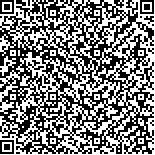李冰冰,许涛,王胜洁,等.重复经颅直流电刺激治疗神经病理性疼痛的效果观察及机制初探[J].中华物理医学与康复杂志,2022,44(4):312-317
扫码阅读全文

|
| 重复经颅直流电刺激治疗神经病理性疼痛的效果观察及机制初探 |
|
| |
| DOI:10.3760/cma.j.issn.0254-1424.2022.04.005 |
| 中文关键词: 神经病理性疼痛 经颅直流电刺激 NMDA受体 GABA受体 |
| 英文关键词: Neuropathic pain Transcranial direct current stimulation N-methyl-D-aspartate receptor Gamma-aminobutyric acid receptor |
| 基金项目: |
|
| 摘要点击次数: 5225 |
| 全文下载次数: 5893 |
| 中文摘要: |
| 目的 观察重复经颅直流电刺激治疗大鼠神经病理性疼痛的效果并初步探索其作用机制。 方法 成年雄性SD大鼠40只,随机选取10只大鼠纳入正常组(n=10),10只大鼠纳入假手术组(n=10),其余20只大鼠行坐骨神经慢性压迫性损伤的模型制作,并按照随机数字表法分为假治疗组(n=10)和治疗组(n=10)。术后14 d,治疗组进行连续8 d的经颅直流电刺激,假治疗组进行假刺激,正常组和假手术组不做任何干预。于术前1 d、术后第14天和术后第22天(即治疗8 d后),分别利用Von Frey和Hot-plate测试大鼠痛阈变化,术后第22天行脊髓组织取材,利用Western blot技术检测各组大鼠的NR2B-NMDA-R、 GABAa-R和GABAb-R的蛋白表达。 结果 ①术后第14天,与假手术组对比,假治疗组和治疗组大鼠的50% MWT和WTL值均明显下降(P<0.05);②术后第22天,与假治疗组对比,治疗组50% MWT和WTL值均明显升高(P<0.05),治疗组的WTL值与术前1 d对比,差异无统计学意义(P>0.05);③术后第22天,与假手术组对比,假治疗组的NR2B-NMDA-R含量增高(P<0.05),而GABAa-R和GABAb-R含量均下降(P<0.05);术后第22天与假治疗组对比,治疗组的NR2B-NMDA-R含量下降(P<0.05),GABAa-R含量增高(P<0.05),但GABAb-R含量与假治疗组对比,差异无统计学意义(P>0.05);术后第22天,治疗组的NR2B-NMDA-R含量与假手术组间差异无统计学意义(P>0.05)。 结论 重复经颅直流电刺激可改善神经病理性疼痛反应,并对痛觉过敏(热痛)的改善优于痛觉超敏(机械痛),其作用机制可能是下调脊髓NR2B-NMDA-R至正常水平,并部分上调GABAa-R。 |
| 英文摘要: |
| Objective To observe any therapeutic effect of repeated transcranial direct current stimulation (tDCS) on rats modeling neuropathic pain and explore possible mechanisms. Methods Forty adult male Sprague-Dawley rats were randomly divided into a normal group (n=10), a sham operation group (n=10), a treatment group (n=10) and a sham treatment group (n=10). A model of chronic constriction injury of the sciatic nerve was established in the latter two groups. Fourteen days after the modeling, the treatment group was given tDCS for 8 consecutive days, while the sham treatment group received sham stimulation, and the other 2 groups did not receive any intervention. Von Frey and hotplate tests were used to test the rats′ pain thresholds 1 day before, as well as 14 and 22 days after the surgery (i.e., 8 days after the end of the treatment). Spinal cord tissue samples were taken to detect the protein expressions of N-methyl-D-aspartic acid receptor 2B, gamma-aminobutyric acid receptor types A (GABAa-R) and B (GABAb-R) using western blotting. Results On the 14th day after the operation the average 50% MWT and WTL values of the sham treatment and treatment groups had decreased significantly compared with the sham operation group. By the 22nd day the average 50% MWT and WTL values of the treatment group were significantly higher than those of the sham treatment group, but there was no significant change in the treatment group′s average WTL between the 21st and 22nd days. On the 22nd day after the operation the average NR2B-NMDA-R level of the sham treatment group were significantly higher than that of the sham operation group, while the average GABAa-R and GABAb-R levels were significantly lower. At the same time point the treatment group′s average NR2B-NMDA-R level had decreased significantly compared to the sham treatment group, while the average GABAa-R level had increased significantly. There was no significant difference in average GABAb-R level between the treatment group and the sham treatment group at that point. On the 22nd day there was also no significant difference in the average NR2B-NMDA-R level between the treatment group and the sham operation group. Conclusions Repeated tDCS can effectively relieve neuropathic pain. The relief of hyperalgesia is more significant than that of mechanical allodynia. A possible mechanism may be the down-regulation of spinal NR2B-NMDA-R to normal levels and modest up-regulation of GABAa-R. |
|
查看全文
查看/发表评论 下载PDF阅读器 |
| 关闭 |